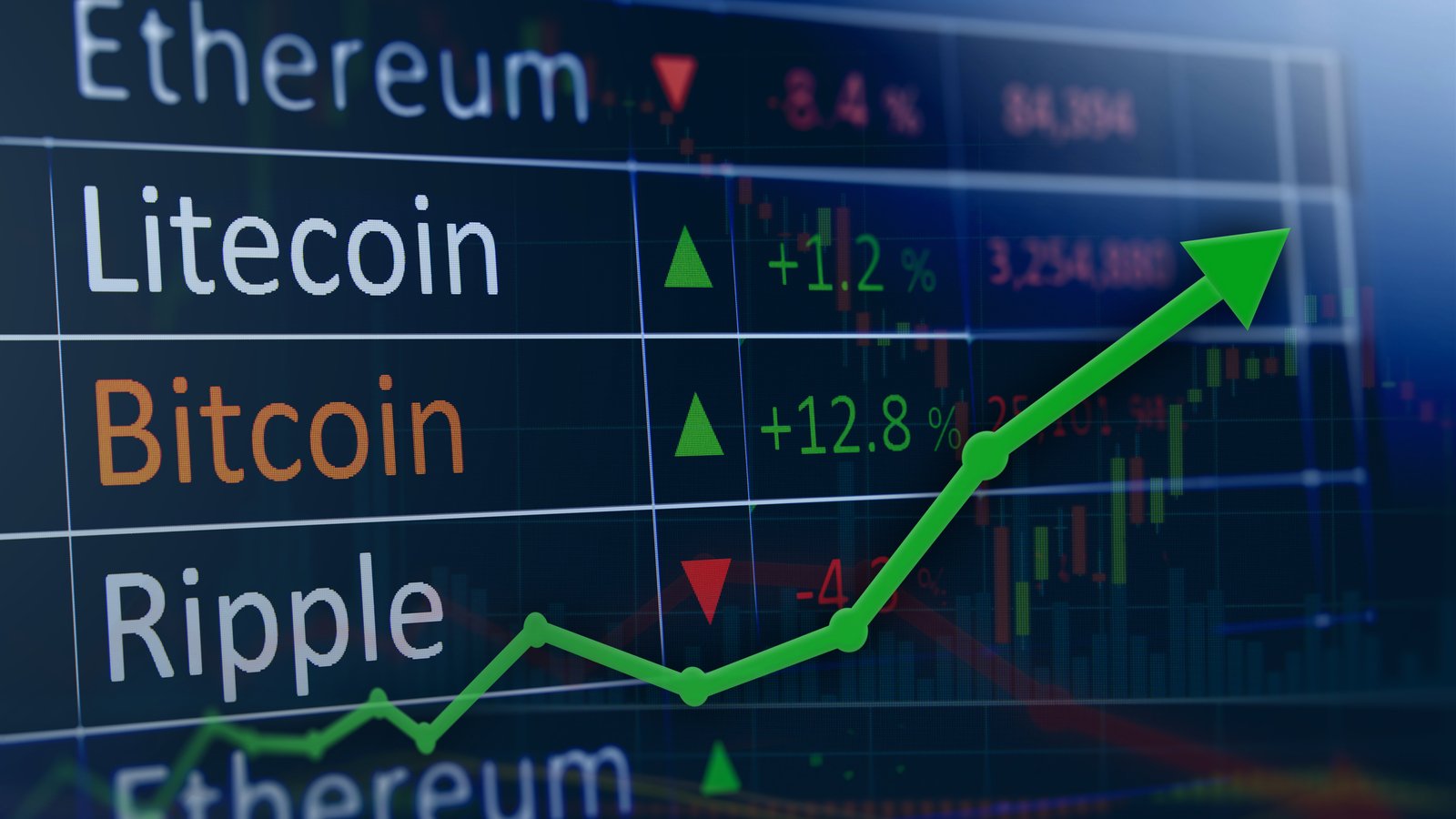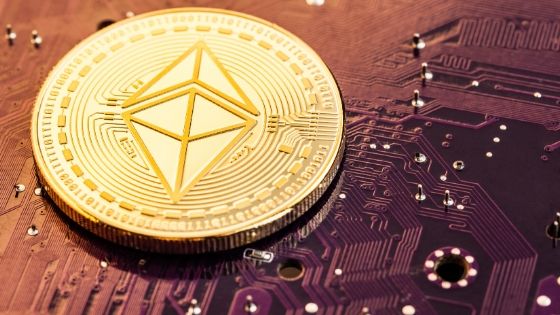 Home / Market Insight, Financial Articles / Cash Is Trash Part 2 Cash Is Trash Part 2 By Jeff Remsburg , Contributing Editor Apr 23, 2020, 6:16 pm EDT April 23, 2020 Two reasons to add altcoins to your portfolio today
Home / Market Insight, Financial Articles / Cash Is Trash Part 2 Cash Is Trash Part 2 By Jeff Remsburg , Contributing Editor Apr 23, 2020, 6:16 pm EDT April 23, 2020 Two reasons to add altcoins to your portfolio today
Ask your average investor why anyone should own a cryptocurrency and the answer will likely boil down to one thing …
The hope of making an outrageous return, potentially, thousands of percent.
And that’s a very real chance.
To illustrate, here’s Matt McCall from his newsletter, Ultimate Crypto , discussing the returns of bitcoin and various altcoins during past halvenings.
(If you’re new to the Digest and aren’t sure what a halvening is, it’s a unique event happening in the crypto world next month in which bitcoin “miners” see their reward for mining new bitcoin cut in half.Huge gains have surrounded the past two halvening events.)
Returning to Matt:
Looking back over the last two halvenings, investing in specific altcoins would have made significantly more money.
During the same period in which bitcoin climbed 4,500% surrounding the second halving, an altcoin called Einsteinium shot up over 580,000%.That’s 129 times the gains bitcoin made investors during its massive run.For perspective, that would have turned $5,000 into $29 million.Talk about a life-changing investment.
If that doesn’t excite you, try this: Another altcoin called verge shot up over 63,000%.That’s more than 630 times your investment!
***But the potential for stratospheric returns isn’t the only reason to look at cryptos today
How about safeguarding your wealth’s purchasing power?
With our government having just fired a “bazooka of liquidity” to combat the economic ravages of COVID-19, one of the side-effects is the creation of trillions of new U.S.dollars.
Now, the hope behind all this is that these efforts will stave off an economic death-spiral and set up our economy to return to health months from now; meanwhile, the value of the dollar will remain relatively constant.
It’s possible.
However, this glut of currency could also be the first step toward a monster the U.S.
hasn’t seen in decades …
Stagflation — in other words, rising inflation while we simultaneously suffer a stagnating economy.
Now, let me make sure I’m not miscommunicating …
Stagflation is not today’s immediate concern.In fact, with oil prices crashing and the global economy still on lockdown, deflation is a much bigger concern.
But as life slowly returns to normal, and as unprecedented fiscal stimulus begins to seep into the economy, inflationary pressure could rear its head — at the same time the economy isn’t yet back on solid ground.
That combo would be a surefire way to destroy the purchasing power of whatever wealth you have stored in dollars.
Traditionally, gold has been viewed as a good hedge against inflation.But today, that’s not your only option.How about the “digital hedge” of elite cryptocurrencies? It offers similar protection against fiat currency inflation, yet comes with a bonus …
The potential for explosive gains that, historically, are multiples greater than what gold offers.
So, today, let’s look at how the Fed’s defense against COVID-19 is actually highly bullish for the crypto world.
***Cash is trash … part 2
In late January, the Digest highlighted Ray Dalio, manager of Bridgewater Associates, which boasts $150 billion of assets under management.We were interested in his concerns for the economy, and his views on cash.
Here’s Dalio from that Digest :
I think that it is highly likely that sometime in the next few years, 1) central banks will run out of stimulant to boost the markets and the economy when the economy is weak, and 2) there will be an enormous amount of debt and non-debt liabilities (e.g., pension and healthcare) that will increasingly be coming due and won’t be able to be funded with assets …
Cash is trash … Get out of cash … What you have to do is have a well-diversified portfolio.You have to be global, and you have to have balance …
Now, if cash was “trash” back in January, then it’s downright scum today given the bazooka of liquidity the Fed just fired at COVID-19.
(To be clear, cash right now is wonderful since it gives you the ability to buy world-class assets at discounted prices.There’s a difference between using cash strategically and using it as the preferred asset in which you store your wealth for the long-term.)
Here’s Dalio from two weeks ago in a question-and-answer session on social-media platform Reddit:
I believe that increasingly there will be questions by bondholders who are receiving negative real and nominal interest rates, while there is a lot of printing of money, about whether the debt assets they are holding are good storeholds of wealth.
I believe that cash, which is non-interest-bearing money, will not be the safest asset to hold.
According to Dalio, all of this has sown the seeds for a coming era of inflation.
***Have the Fed’s recent actions finally set the stage for inflation to reappear?
Well, let’s review what the Fed has just done to combat COVID-19.
Cut short-term lending rates to zero …
Pledged to buy commercial paper which is the short-term unsecured debt that businesses rely on for operational cash …
Created a separate facility to provide credit to keep money markets functioning properly …
Launched an operation focused on currency swaps to help institutions in need of dollar-denominated assets …
Bought municipal debt …
Expanded its previously-announced asset purchase plan, which was supposed to hit a limit of $700 billion — but now it’s unlimited (the purchases have now expanded the Fed’s holdings on its balance sheet by more than $2 trillion) …
Announced a $300 billion credit program for businesses and consumers …
Supported the Treasury’s Payment Protection Program which tries to incentivize businesses not to lay off employees during COVID-19 shutdown …
And of course, launched the $2.3 trillion lending program.
This includes allowing the Fed to buy corporate bonds and municipal governments.
All-in-all, we’re looking at around $6 trillion in liquidity.
Is it reasonable to believe the dollar’s value might be impacted by this bazooka of dollars suddenly flooding the economy?
Again, I’m not claiming we’ll feel it tomorrow.But can we really brush this off and not even consider it as an inflationary influence?
From Forbes :
While the Central Banks are cutting rates and buying bonds, pumping money into the system, the fiscal authorities will be issuing more debt.
If everyone issues debt all at the same time, and the only large buyer of this huge tsunami of debt is the Central Bank, yields and spreads may be contained in the short run; however the extra cash in the system will likely result in more money chasing fewer “real” goods.In other words, we could potentially end up in a situation very rapidly where there are lots of dollars, Euros, Yen etc.but not enough goods due to the severe impact on global supply of goods.
Investors have become used to subdued inflation for decades; however just as quickly as the bull market in equities was caught in an avalanche of risk aversion, we are possibly looking at a regime change in inflation expectations as well.
If this occurs, financial assets could suffer a double whammy — not only do earnings get adversely impacted due to a demand slowdown, but inflation and a rise in real rates causes investors to have a loss of confidence that the long-term inflation anchor will be maintained.
***How to protect your wealth, while also putting yourself in position for potentially huge gains
For centuries, gold has been one of the primary assets of choice for investors looking to maintain their purchasing power.
While fiat currencies have been created and destroyed over the centuries, gold has endured.And that hasn’t changed.
But investors today have a new option — elite crypto currencies (some investors refer to them as “digital gold”).
Both assets accomplish the necessary task of providing investors an asset that can maintain its value independent of the ups-and-downs of the dollar.
And both assets have held up well during the recent market rout.While gold has tacked on gains, top-shelf cryptos have held their value admirably.
To illustrate, look at CIX100.This is an index of the top 100 crypto coins in the market.You might think of it as the “S&P” of the crypto world.
Since the beginning of the year, as the S&P is down 12%, CIX100 is up 9.6%.
Similarly, the basket of altcoins Matt holds in his Ultimate Crypto portfolio is net positive in 2020, with one of them still up more than 80%.
Now, despite the similarities between gold and elite altcoins, there’s one key difference — the potential for explosive gains in crypto, as Matt highlighted earlier.
***Join Matt next Wednesday at 7 PM EST for his 2020 Crypto Millionaire Summit: Last Call
Matt will be discussing the current state of the crypto world, bitcoin, elite altcoins, the upcoming halvening, and what investors should be looking for beyond 2020.
It’s a free event that will be jam-packed with information.If Matt’s right, we’re on the verge or a major move in the crypto universe.
Get all the details next Tuesday.Click here to reserve your seat.
Have a good evening,.
